Since September 2020, I have been moving through the wonderful and wondrous scientific world of the three ocean research projects CUSCO, EVAR and REEBUS. Above all, it is the ocean scientists who continue to puzzle me, leave me with a question mark on my forehead, and open up new worlds to me. At the beginning, my head was full of ideas about how scientists are and act. Now, every week, I have to face the realization that all I know is that I don’t know anything. This time at the surprising interplay between science and art. A little search for an unexpected connection.
Art and science seem so different – one would almost think they are opposites. I was all the more surprised when I noticed that several of my oceanographic science colleagues like to paint, draw and photograph, and do so well. But if you take a deeper look into history, this is not that unusual.
Leonardo da Vinci is certainly a household name. His drawing “The Vitruvian Man” is a well-known example of the artistic representation of physique and proportions. Or the music of the spheres by Johannes Kepler, physicist and imperial court mathematician to the Habsburgs, who assigned a relative orbital velocity to each planet and, on the basis of this, a tone of his own. And even Goethe was inseparably linked to the natural sciences in his literature. Thus, during his trip to Italy, he noted down many thoughts on geology, anatomy or mineralogy and published 1810 his “Farbenlehre”, a work of more than a thousand pages.
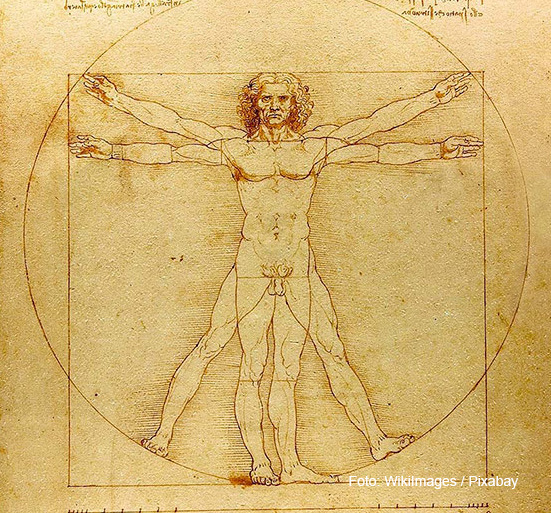
The Vitruvian Man, one of Leonardo da Vinci’s most famous drawings. And an exciting analysis of physique and proportions.
Art and science – science and art. Two love birds, apparently, with very different external characteristics. Where science seems to be constantly specializing and intensifying, art wants to open up, unfold, liberate. Where science demands precision, art needs to break with the rigid and fixed. Art is oil – sticks to you when it touches; science is water – designed for clarity and in constant flux. It is a contradiction that these two combine. And yet they can’t seem to get away from each other. Again and again, I encounter scientists who are also artists.
It is only when I talk to two ocean scientists from project CUSCO about their painting that I understand: I was wrong. And fundamentally. I saw science and denied it the unfolding. I saw art and attributed to it absolute freedom, the breaking of rules.
In fact, there is not much difference between the two, except perhaps the campus where they are taught. Where science specializes and has to be precise, the same applies to art in many areas. In perspectives, in methods, in certain effects. In music, when no discord should arise. And where art breaks with the tried and true and with rules, science, which constantly questions, discards the old and explores the new, does so all the more. My essay on how unexpectedly rebellious scientists can be, and how this is what makes them excellent researchers, illuminates precisely this quality of science.
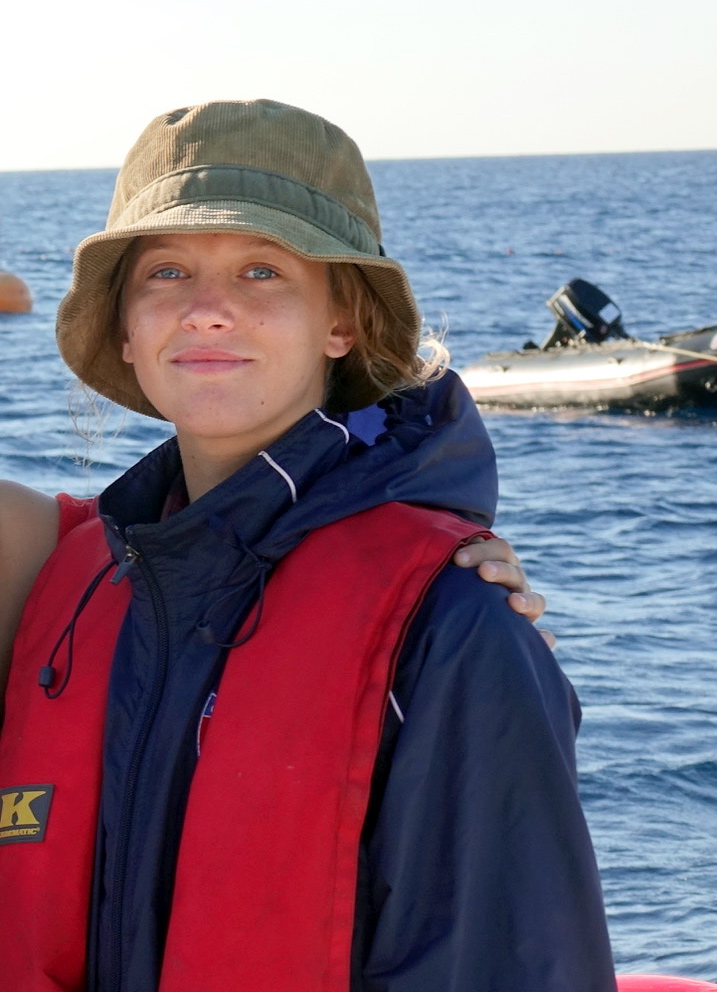
Alba Filella López de Lamadrid – Ocean scientist project CUSCO und artist. 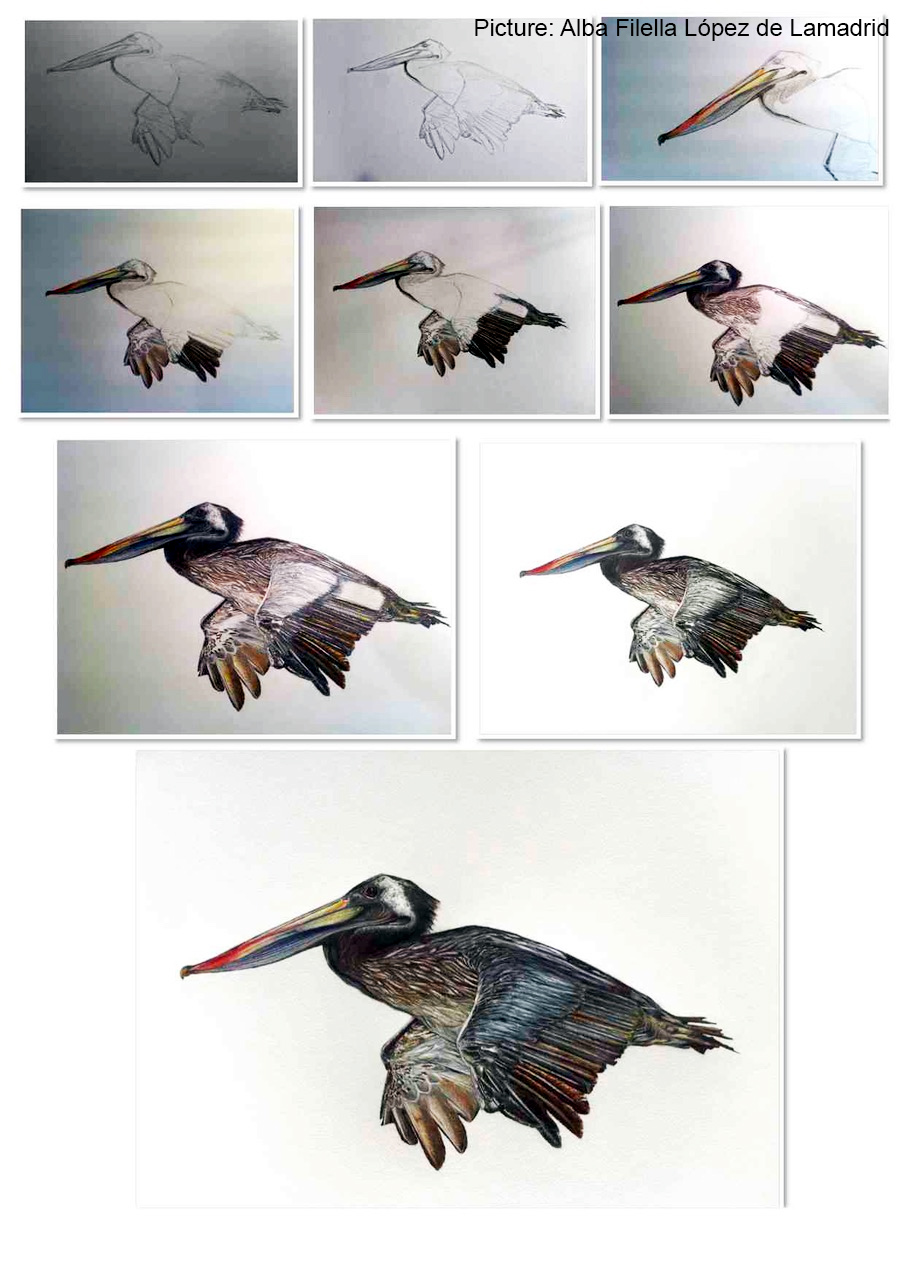
Evolution of a Drawing. Peruvian Pelican from the research area of the project CUSCO research expedition. © Alba File 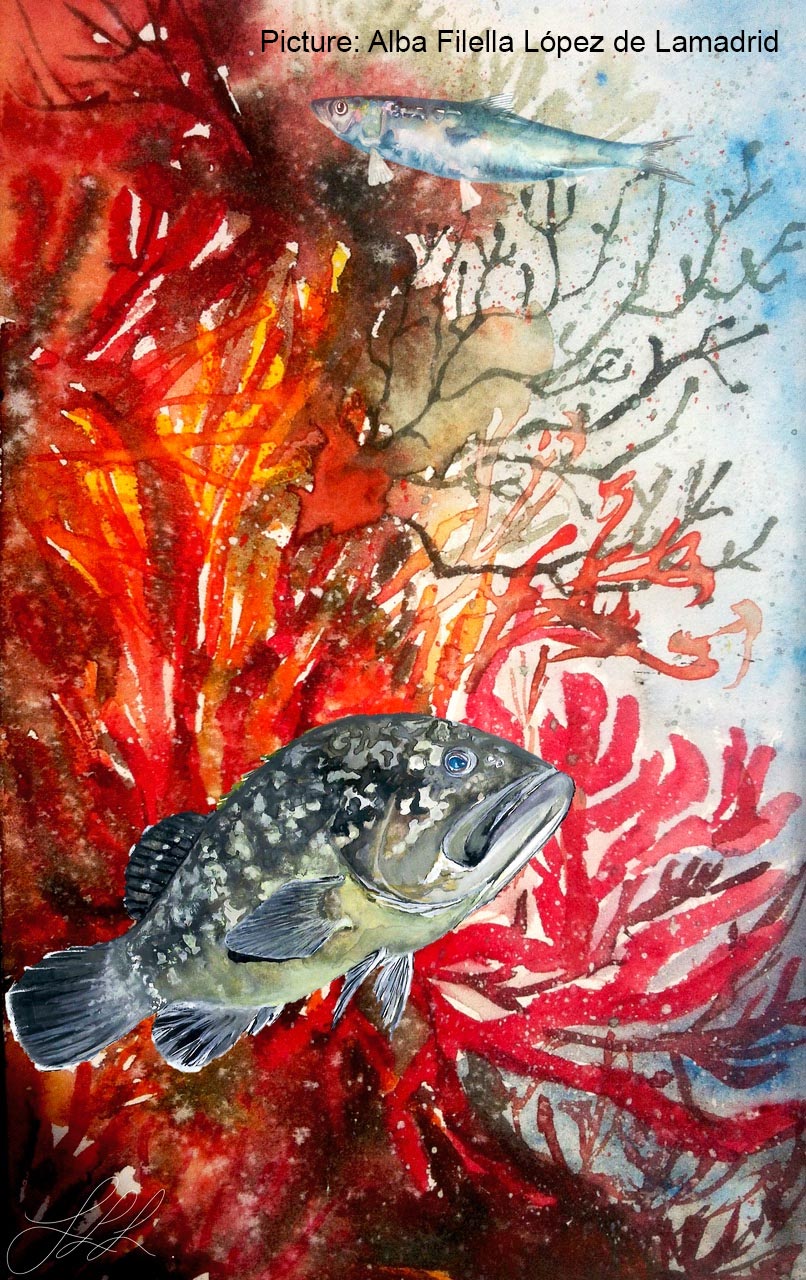
Gorgonians and Fish. © Alba Filella López de Lamadrid 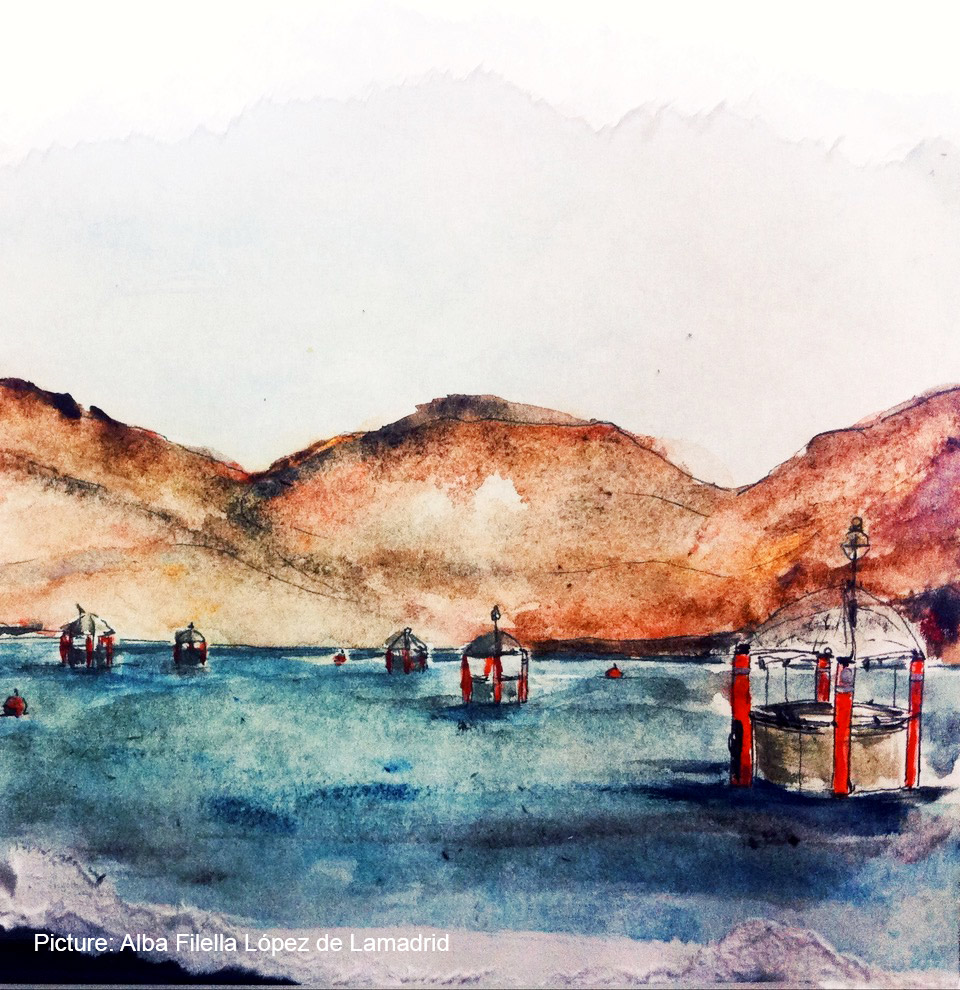
Mesocosms (ocean research structures) off the coast of Peru during the research expedition of project CUSCO. © Alba Filella López de Lamadrid.
Science and art have always been inextricably linked, as far back as antiquity. And they still are today. The architect calculates and draws what is built. The biologist draws and paints what he sees or comprehends. Notes that sound harmonious together obey mathematical rules. It is only understandable, even logical, that art and science play their little tryst and inspire each other.
I ask the two ocean researchers how they think art and science are connected. Both see it similarly: art often draws its inspiration from the environment, and thus from the research that derives from it. And the constant broadening of horizons through changing artistic methods and approaches is reflected in an open mindset in everyday scientific life. Whether in science or in art, when the focus and the compulsion to work correctly become too strong, both take a step back and allow themselves space again. Letting go – development and freedom are needed in both fields.
They don’t want to call their art a compensation for their scientific profession. For them, both are a calling.
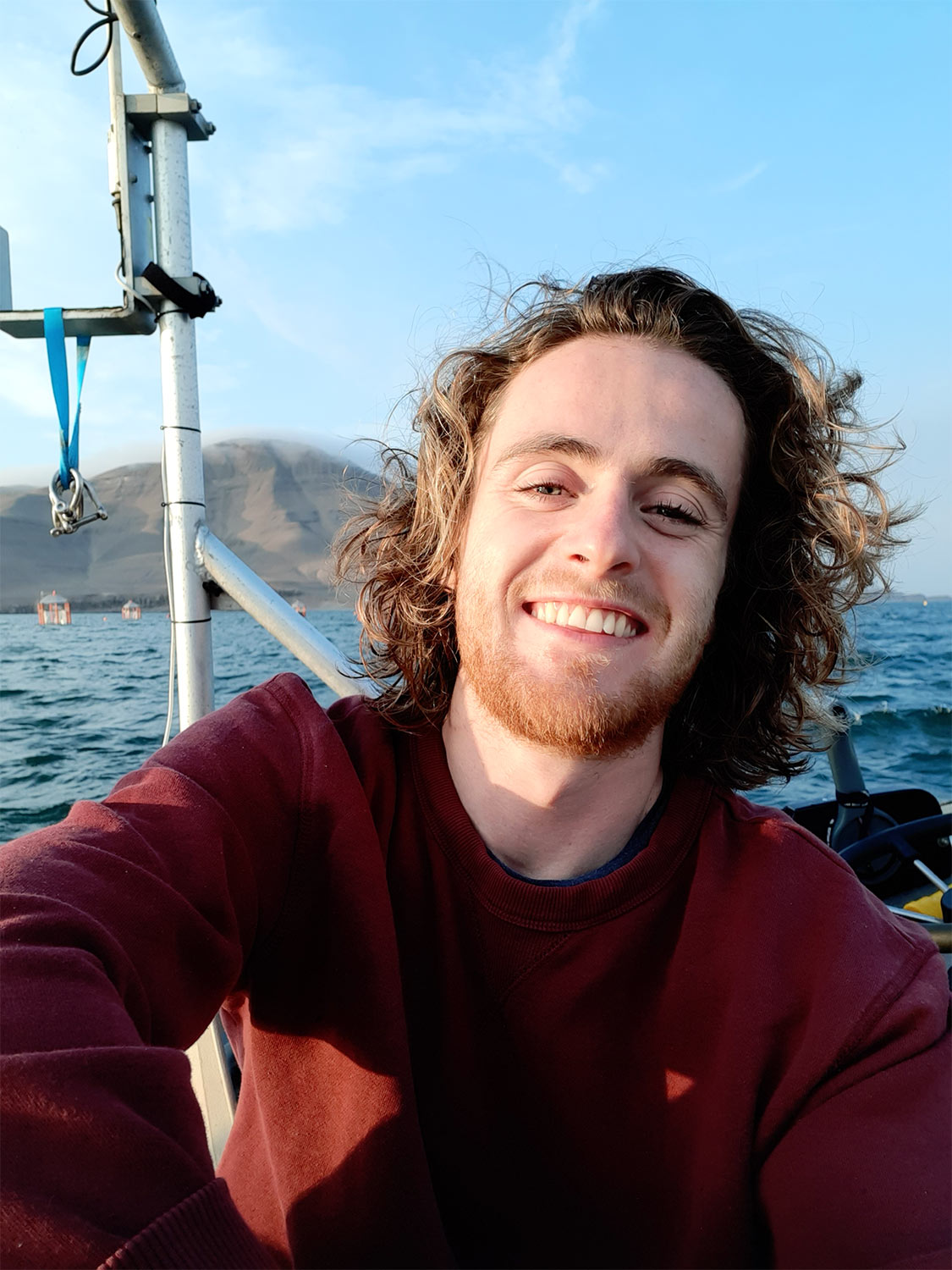
Nicolás Smith-Sánchez – Ocean scientis project CUSCO und artist. 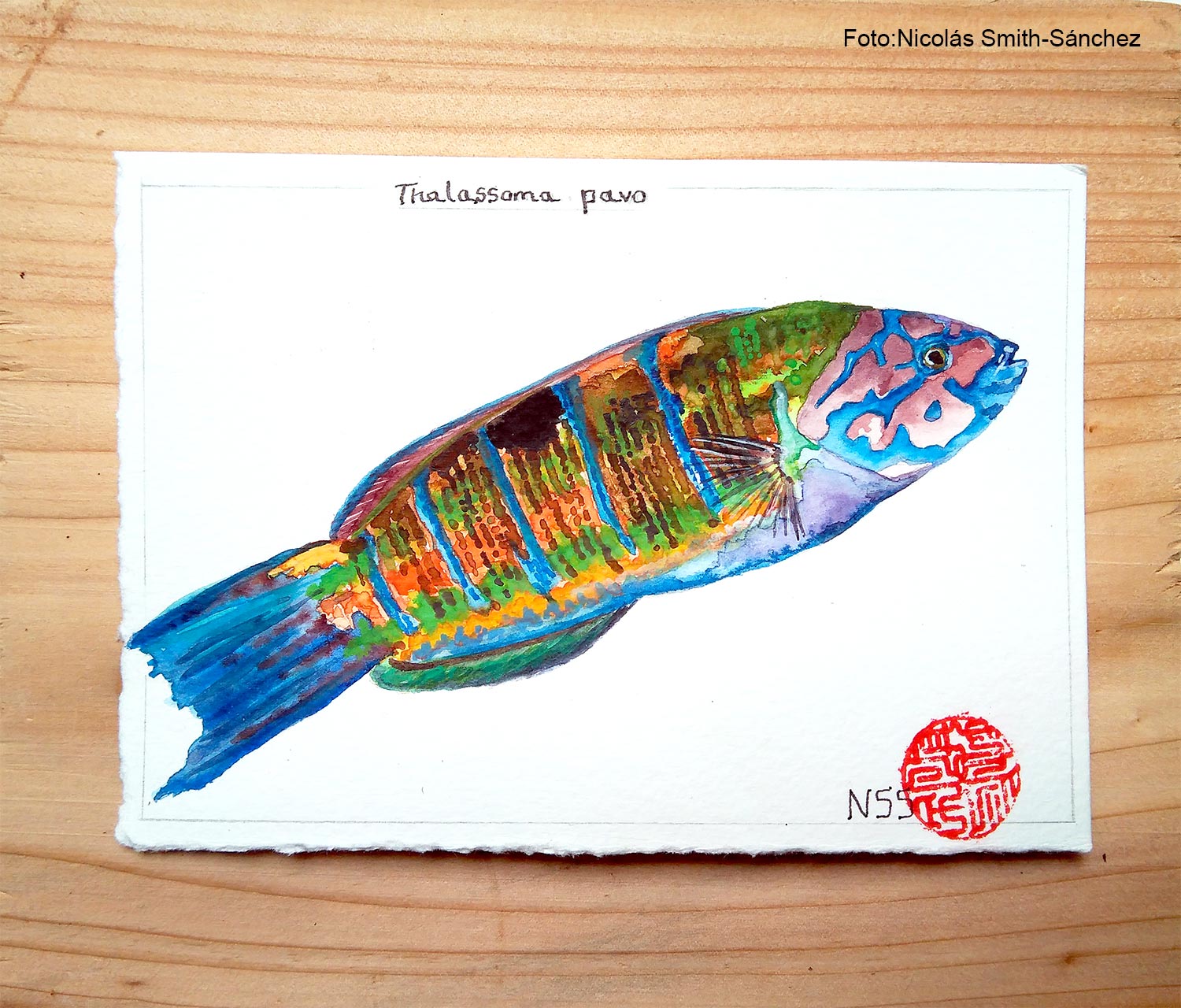
Ornate wrasse – Thalassoma pavo. Picture and © Nicolás Smith-Sánchez 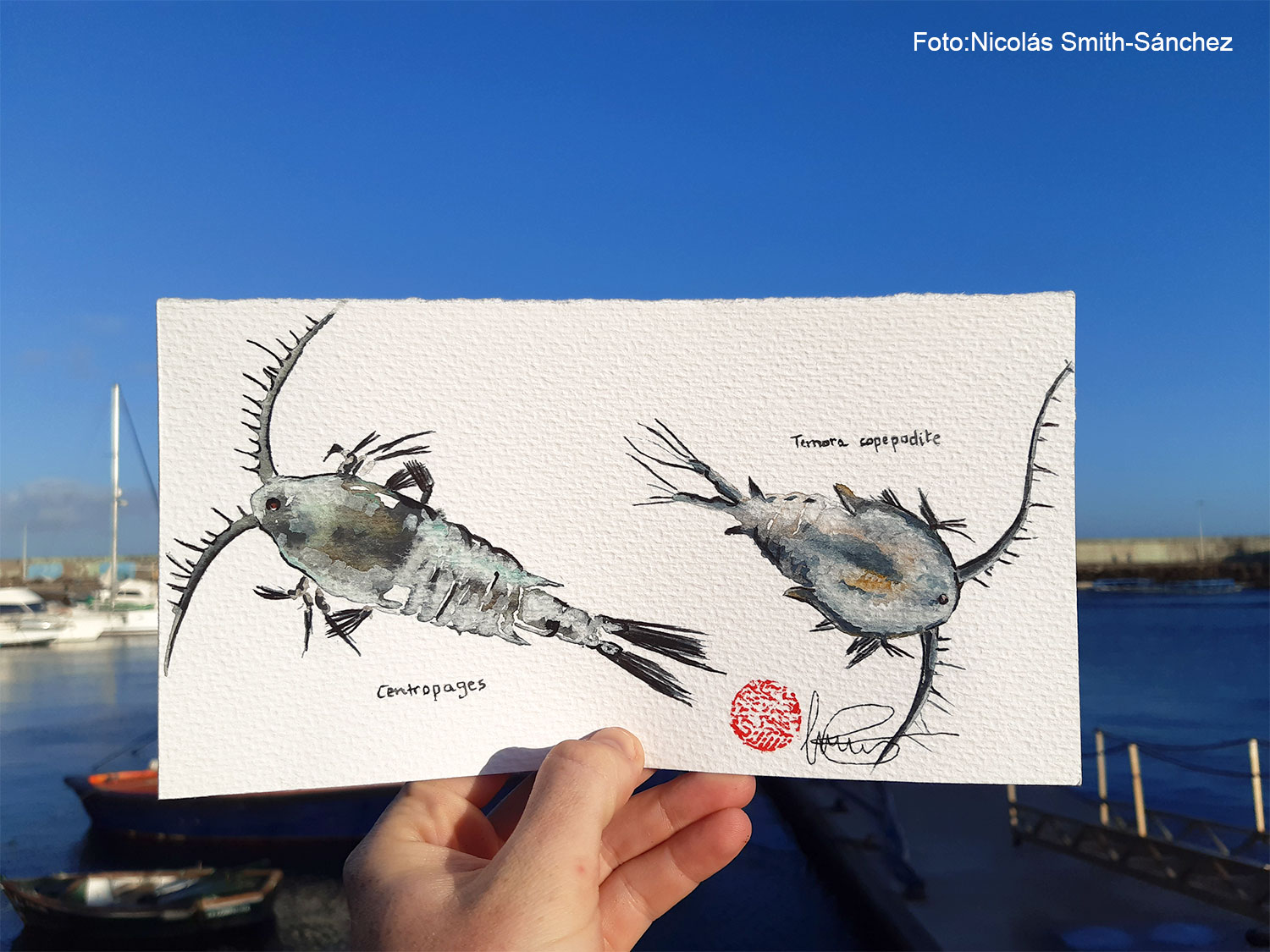
Copepods. Picture and © Nicolás Smith-Sánchez 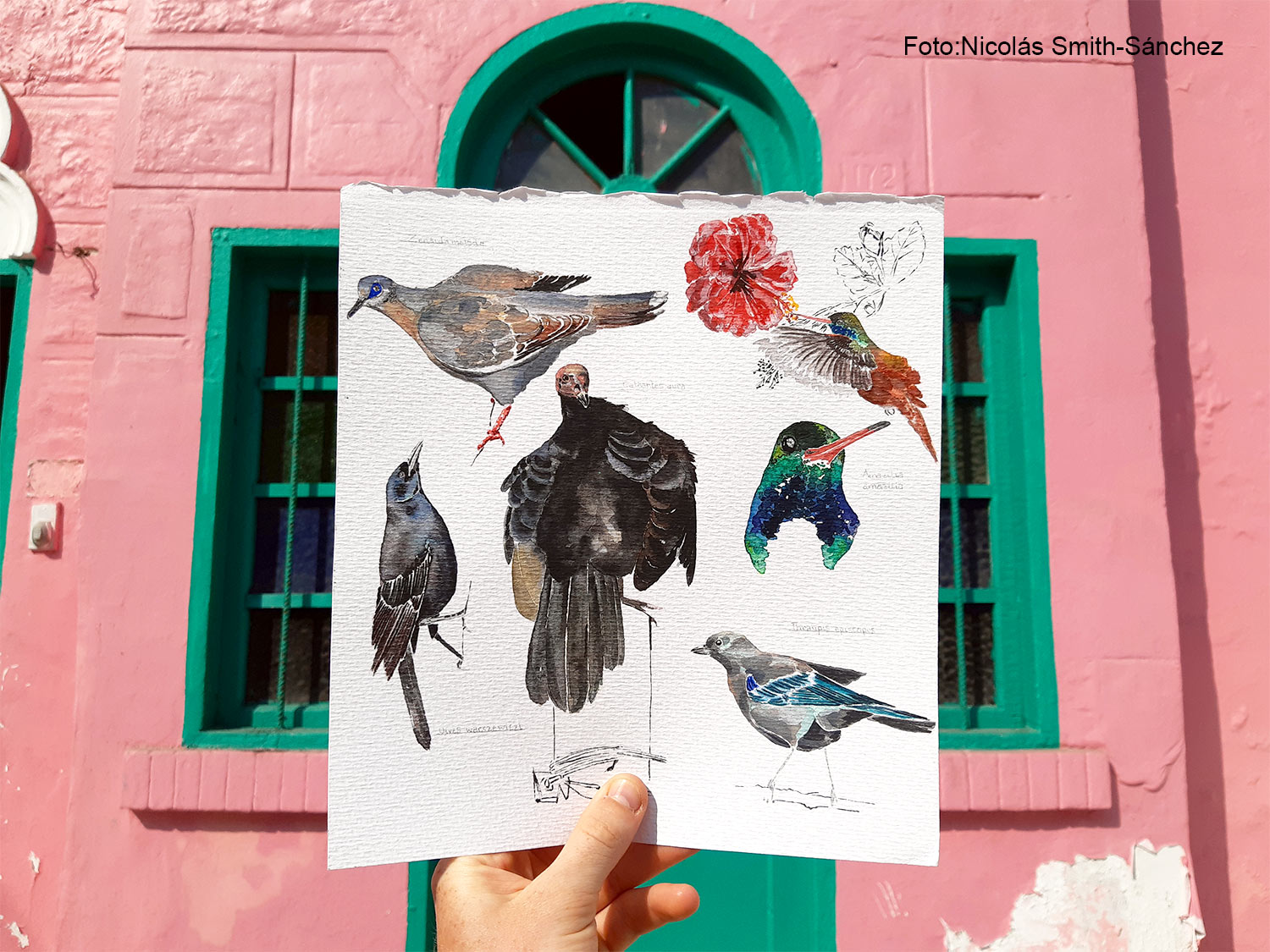
Bird species. Picture and © Nicolás Smith-Sánchez
The conversation with ocean scientists and artists Nico and Alba, their enlightening and inspiring views on the inseparable love couple of art and science, and more of their painting in the next blog post. You can also find them on Instagram:
Alba Filella López de Lamadrid – www.instagram.com/albsfll
Nicolás Smith-Sánchez – www.instagram.com/nicsmithsan
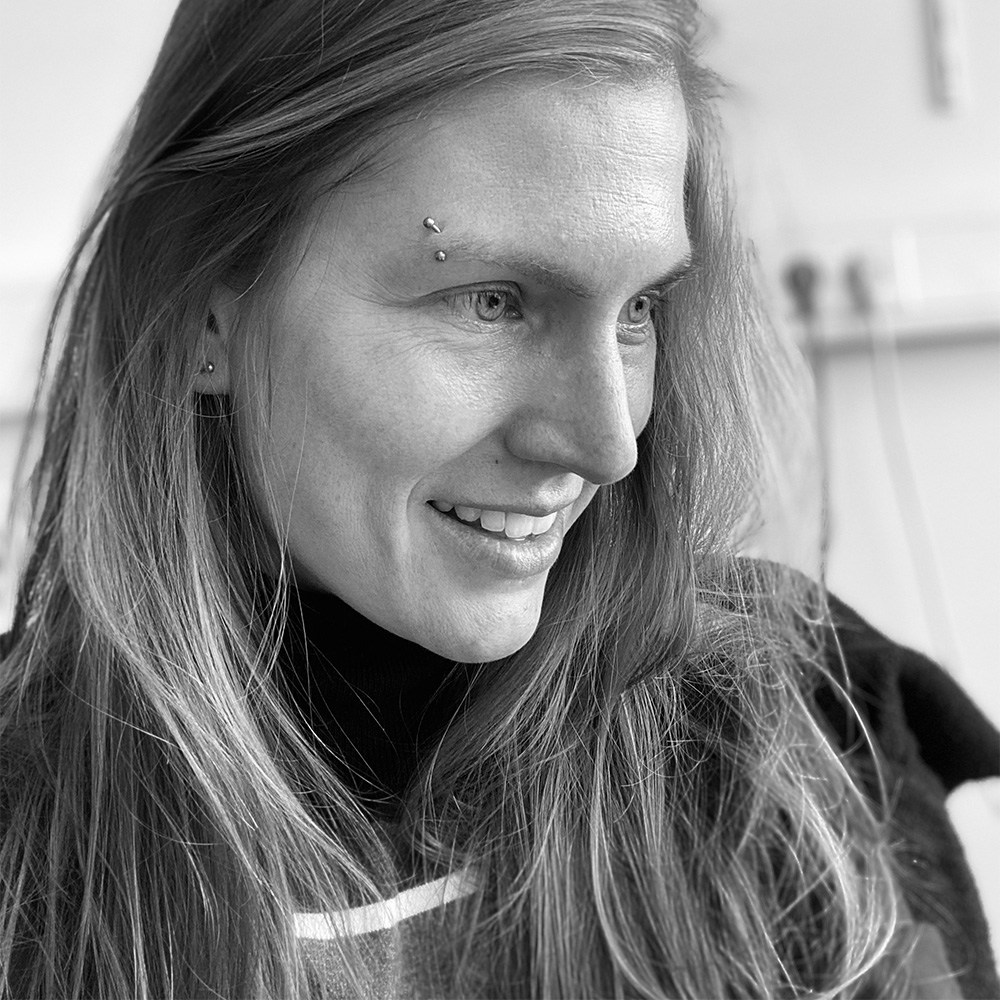
Author: Ann Kristin Montano
Former scientist who worked long enough in other fields to build up stereotypes about scientists. Now likes to work among scientists to break down the stereotypes. Likes art herself immensely and therefore feels very touched by this little unexpected love story.